Lifeboat volunteers have made the sea safer for nearly 200 years. What motivates the crew of St Davids lifeboat to keep launching?
The first members of the lifeboat crew to reach the station go out on the ‘shout’. Nick found it strange that the Coxswain told him he was going, even though Nick was the seventh person there. He asked why he’d been chosen, only to be told that all would become clear later. He should just hurry up.
The three-man crew of the inshore lifeboat (ILB) reached the coordinates they’d been given and found a fishing boat waiting for them. The crew and boat were fine, but the fisherman couldn’t wait to leave the scene. “It’s over there,” said the fisherman, as he pointed to something floating in the water. “I’ve done my bit, I’m going.”
To the crew’s horror, the shapeless mass floating in the water became more and more recognisable as they got closer. Despite the extreme state of decomposition, they realised it was the body of a man who’d been lost at sea weeks before. One member of the crew outright refused to recover the it. Nick and the remaining crew member persevered as the body was disintegrating in their hands, telling themselves that if it was one of their loved ones, they’d hope someone would bring him home.
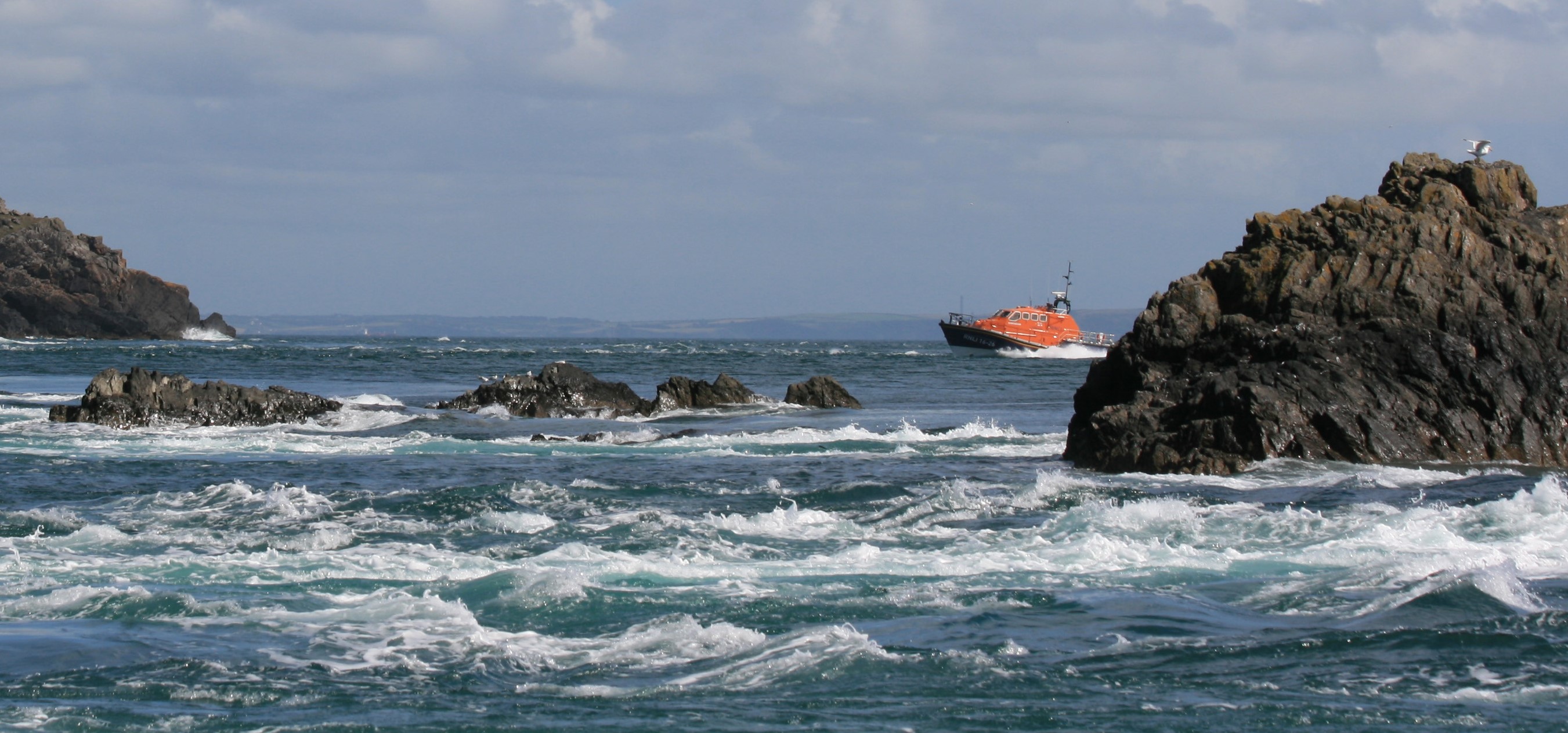
Nick Price and the rest of the lifeboat crew are volunteers, so why do they take on tough jobs like this?
If it’s my own child I’d like to think that they’d be there if anything ever happened to any of mine. That’s the way we all look at it now… Without it [the lifeboat], there isn’t an awful lot around…”
Nick Price
St Davids lifeboat is owned and operated by the Royal National Lifeboat Institute (RNLI), a nation-wide charity that provides emergency services at sea. Like any large charity, the RNLI has many fulltime members of staff in professional roles. The people on the ground though, the men and women who go to sea in an emergency, are almost all regular people with regular fulltime jobs. Nick, for example, is a carpenter by trade. “We all get seasick,” said Nick, “And a lot of them can’t swim. This isn’t just down here, its nation-wide.”
Nick, who joined the RNLI in 1995, had several harrowing experiences in his first few years of service. Some are more fortunate, like seasoned skipper Judd Kohler. Judd’s worst experience so far was, “Bringing in a deceased dog… [But] being a dog lover, that was pretty rubbish.”
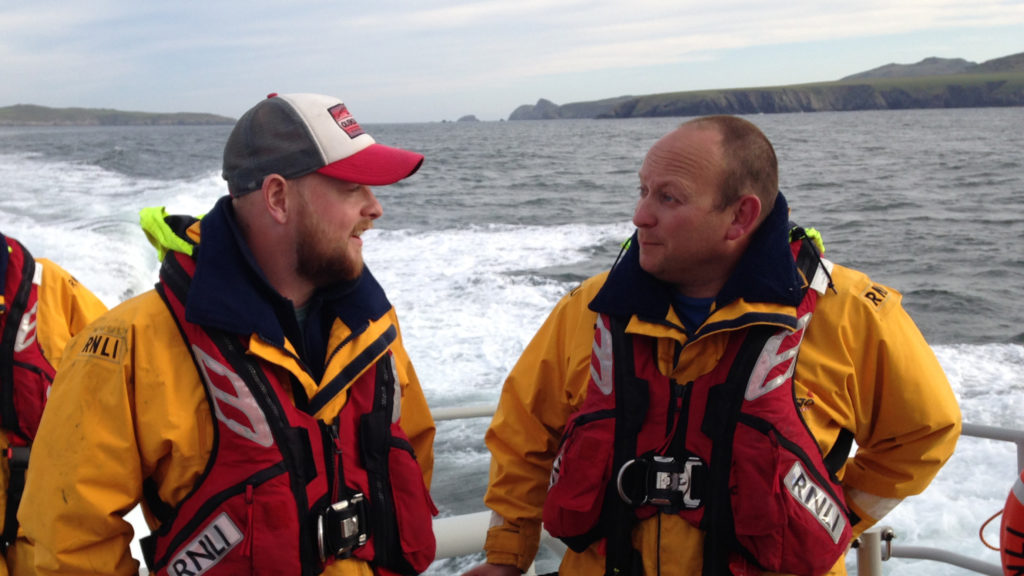
In the ‘Coxswain’s bar’ of the local pub, the longer serving Padrig turned to a new crew member, saying, “You haven’t been on a real shout yet have you? Out in force nine by The Smalls.” The Smalls is a lighthouse nearly half-way between Wales and Ireland.
That’s the luck of the draw. As Judd said, “I’m lucky enough not to have had to bring in a human.” Judd has volunteered with the RNLI for eight years, and now holds one of the few fulltime positions at St Davids lifeboat: station mechanic. Regardless of what the role demands, Judd’s motivation is clear. For him, it’s a calling. “There was never any question that I was going to join the RNLI as a volunteer,” he said, “And I’m lucky enough now to be staff.”
It’s all I ever wanted to do.”
Judd Kohler
Southwest of St Davids Head, the most westerly point in mainland Wales, there’s nothing but the Atlantic between you and America. Due West is Ireland, which is only about 40 miles away at the closest point. The narrow channel of the Irish sea, and in particular, the Pembrokeshire coast, can be a notoriously treacherous place. “Very quickly, very instantly it can be pretty horrendous,” said Judd, “We’ve got some of the strongest tidal flow in the world here. Within a mile of the lifeboat station you can be in eight knot tide…” To put that in perspective, some fishing boats have a top speed of little over eight knots. “Strong tides against the wind can create some big sea,” he continued, “So… you’re looking at …up to about 30 foot waves by the time you get round to St Davids Head, which is only two miles from here.”
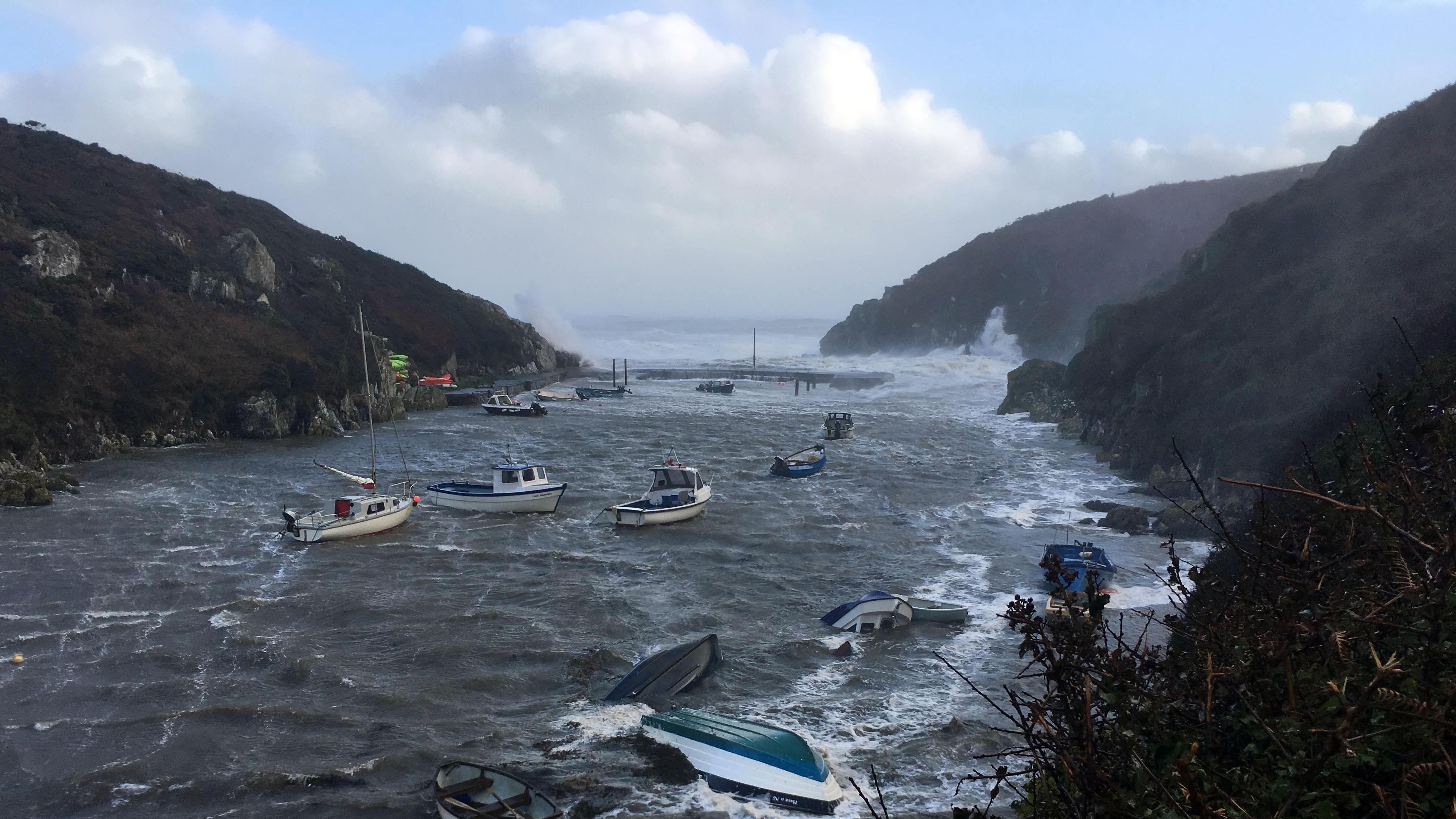
It’s hard to imagine why people would volunteer to face such fierce conditions, but, “You don’t really judge it or analyse it until you get there and see what you’ve got to do,” said Nick. “And, the bad ones, you tend to deal with the bad ones, because you’re concentrating a hell of a lot more than you would do if there isn’t an awful lot to do.”
Still, given that the conditions here can be particularly concerning, it might seem strange that the crew are so keen to put themselves on the line. But St Davids is unusual in other ways, ways that might explain the devotion the men and women of the lifeboat. St Davids is Britain’s smallest city, and knowing it’s one of your neighbours in trouble probably pulls people in that bit more. As Nick said, “We’re quite close-knit… in the community so we all know each other.” More than that, the bond that forms in the boathouse could be what keeps the crew committed. “There’s definitely a community amongst the crew,” said Judd, “It brings a lot of people that are varied, and a lot of people, together. Definitely.”
It’s also about belonging, “When I first joined,” said Nick, “It was because a group of my friends had joined and I thought, I’ll give that a go… and the group of us kind of stayed together really all the way through.”
For some people, being in the RNLI just runs in the family. For example, the Richardsons, who have just featured on an ITV Wales documentary called “Britain’s Smallest City”. The eldest of the brothers, Ben, explained that, “Judd and both my brothers, who are all on the crew, kept saying I should join,” so, “Nearing the end of 2017 I decided to go for it.”
It really is a family affair, as Ben added that his wife, Sarah, is soon to join the RNLI press officer team. Judd’s partner Ellen is also on the crew. Having recently become a mother, “She’s stood down for the moment because of the baby,” said Judd, “But she’s also our lifeboat press officer.” In fact, Judd and Ellen shared their good news on Facebook by posting a picture of a pair of tiny, yellow boots next to their own yellow RNLI wellies, with a caption that read, “We are… expecting the next generation of lifeboat crew.”
There are several families that make up quite a large part of St Davids lifeboat. “Currently we’ve obviously got myself and Ellen,” Judd said, We’ve got a lot the Richardson boys… Nick and Dai Price, so more brothers, the Chant brothers are on the crew. So yeah, definitely, it’s a real family thing. In the past we’ve had Sting and Malcom [Sting’s father], and obviously Malcom’s daughter as well, so going back a long time there’s been families, definitely.”
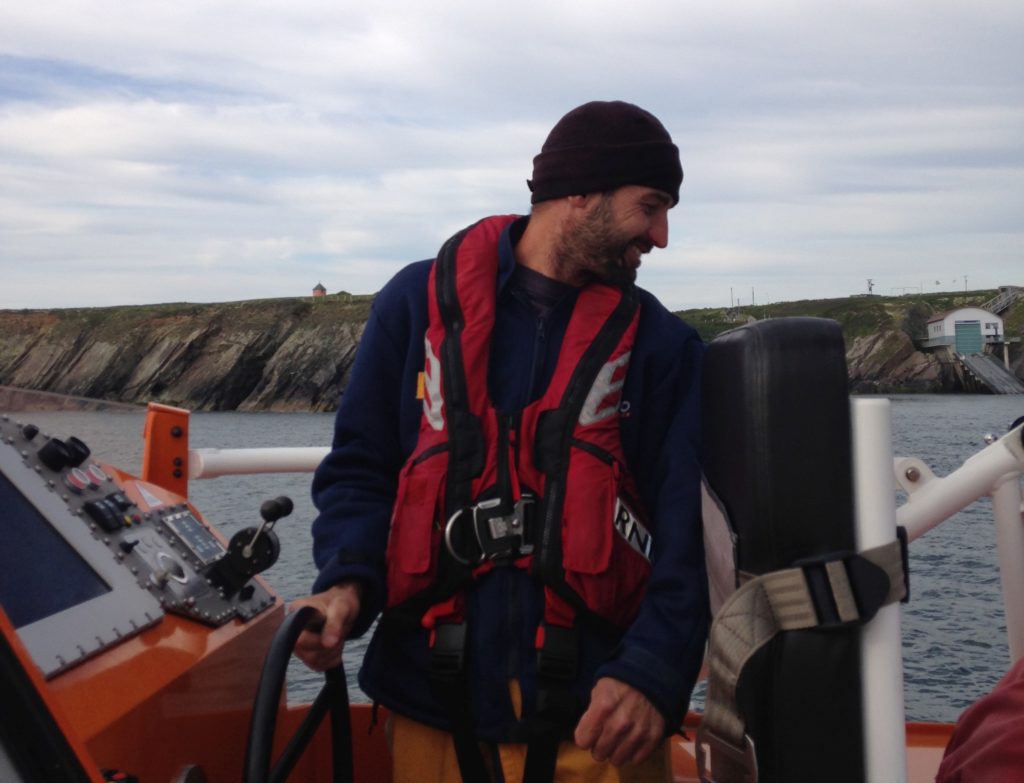
These brave brothers and sisters are well-equipped for the challenges they face. When the St Davids lifeboat, the Gem, sank in 1910, the crew were armed with little but their wits as they rowed through a vicious storm towards a vessel that was in danger of being wrecked on a reef. Nowadays, its different. “You’re very well protected,” said Nick, “You’ve got the best equipment that you can have on you.”
There’s the training aspect too. “We’ve got trainers here on station that can train us weekly,” said Judd, “We’ve got coastal trainers that come down every month, every six weeks and do training, or the RNLI college down in Poole which is an amazing facility… The training is second to none.”
This training has evolved over time. As Nick explained, “There’s been so much training over the last five years… From when I joined to what it is now, we were thinking more for ourselves sometimes before…. It’s pretty well drilled, the way it is now.”
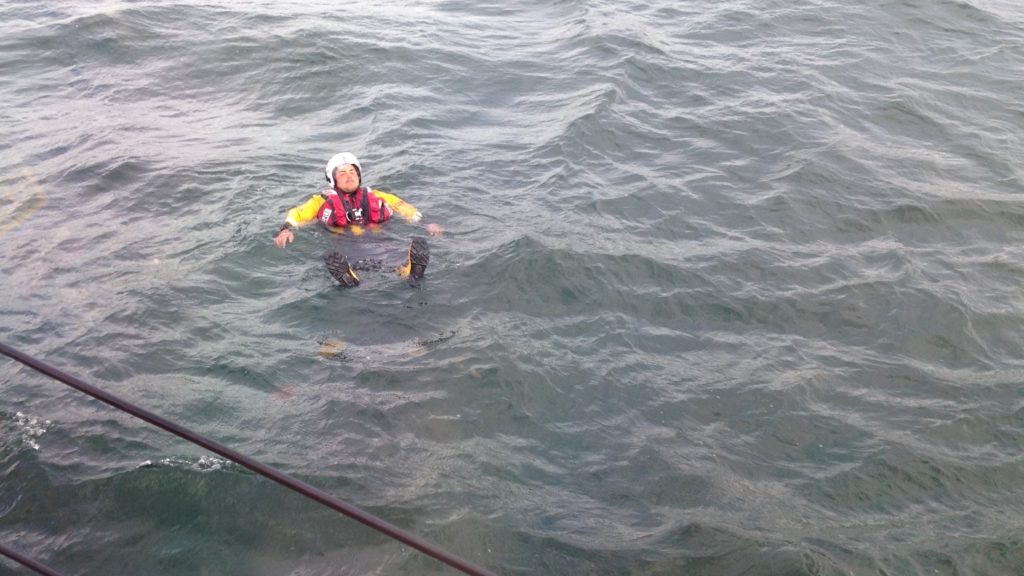
This training can be part of the motivation to join, “It’s the whole, saving lives, volunteering, learning new things,” said Nick, “And, it has taught us a lot really: a lot of first aid, a lot of things about safety out at sea… the courses we’ve done they’ve been really, really helpful in day-to-day life.”
Even with the best equipment and training the lifeboat crew are still risking their lives. “There’s been too many hairy moments,” said Nick, “Where you’re thinking oh my god that was close.” What motivates people to go to sea in a storm?
It’s quite an adrenaline rush from getting changed to actually getting out on to the water… By the time we’ve actually done a lot of the things on the boat that need to be done… you don’t really have much time to think.”
Nick Price
Afterwards, there is time to think, and Nick has reservations about the psychological impact that some of the work can have on the crew. Having dealt with a number of dead bodies and dangerous situations, Nick said, “I think it depends on individuals, it depends how thick-skinned you are… but if you’re one of these people who’s going to dwell too much on certain things, it’s going to be pretty hard for you.”
Despite the hardship that comes with the work, Nick is still optimistic about the lifeboat, “It’s good to be involved with the RNLI, it’s good for everything… If it’s something you’re interested in, you’ll do well there.” And whether they joined for family, community, altruism, training or a love of the sea, they are all committed to their roles. As Ben said, “I’m so glad I finally did it!”

